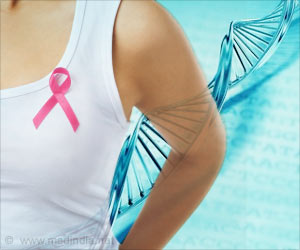It’s important to remember, Shagisultanova says, that HER2 and PI3K are necessary for cell development and growth – the sort of growth that takes place in normal tissue. However, “when it becomes abnormally activated, all systems of checks and balances get unbalanced, and that’s when cancer starts.”
HER2 is a protein present in about 20% of breast cancers. HER2-positive breast cancers tend to be more aggressive than other breast cancers, though treatments designed to specifically target HER2 have been shown to be very effective. Many of those treatments involve blocking HER2 growth signals.
Advertisement
“Since we discovered HER2 inhibitors, life expectancy for patients with HER2-positive breast cancer has improved tremendously, because we’re able to block one of the main drivers of this cancer,” Shagisultanova says. “If we just use chemotherapy and don’t block HER2, cancer cells divide faster than we can kill them, even with a powerful chemotherapy. But once we block HER2 growth signals, the combination of that HER2 blocker and chemotherapy can kill tumor cells and cure patients with early stage HER2-positive breast cancer or prolong the life of patients with metastatic HER2-positive tumors.”
However, about 30% of HER2-positive patients also have PIK3CA mutations. Because the PI3K protein is directly connected to the HER2 receptor, “if it is mutated and has been activated, it doesn’t matter how much you block HER2 growth signals upstream, PI3K will still send the growth signal downstream and make our blockade futile,” Shagisultanova explains. “PI3K will tell the tumor cells to grow.”
Developing a PIK3CA inhibitor
Now that evidence shows PI3K drives therapeutic resistance in HER2-positive breast cancer, one of the next important focuses of research will be developing inhibitors for PI3K.
“It’s been very difficult to develop effective inhibitors to this molecule because PI3K is connected to many growth factor receptors,” Shagisultanova says. “In initial trials we saw that when you block PI3K, insulin signaling tries to counteract this block and blood sugar goes up. So, one of the side-effects has been diabetes, and we don’t want to make cancer patients unnecessarily sick from other conditions while treating cancer.”
In 2019, a second-generation PI3K inhibitor that doesn’t have high levels of toxicity was developed. Through cell line and animal modeling done in her lab, Shagisultanova has been able to show that the recently approved PI3K blocker combined with a HER2 blocker made tumors regress, “which is very, very encouraging,” she says. “We were seeing that it resulted in the prevention of tumor growth.”
“What we’re trying to do is cut off all the pathways for the tumor cells to grow” Shagisultanova explains. “We’re hopeful that this combination of PI3K and HER2 inhibitors will show significant results for patients with this aggressive type of breast cancer.”
Source: Eurekalert



